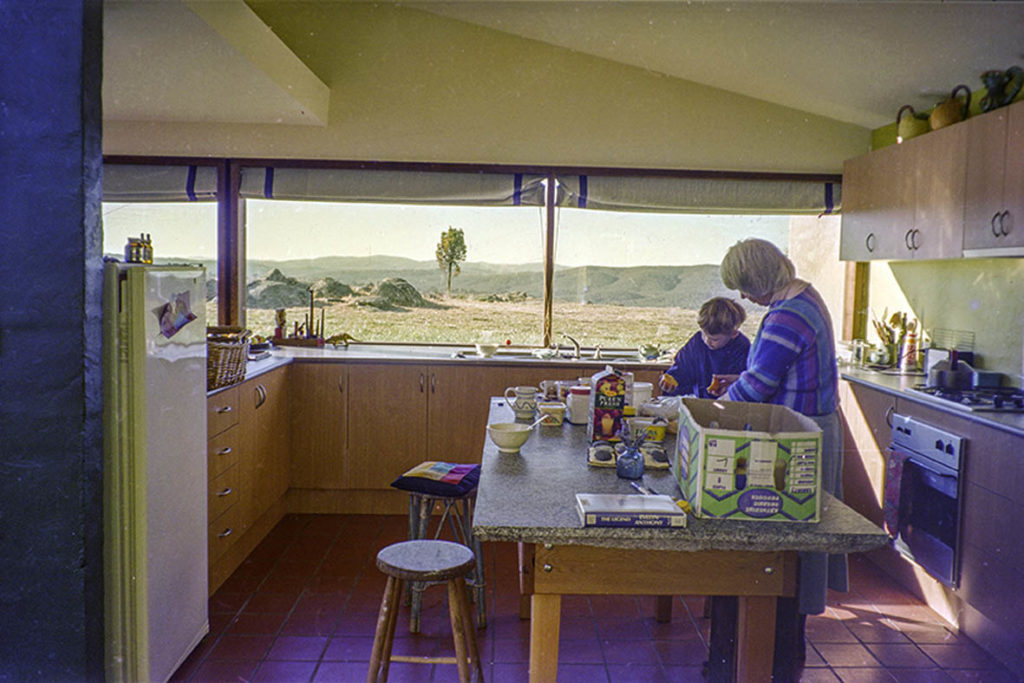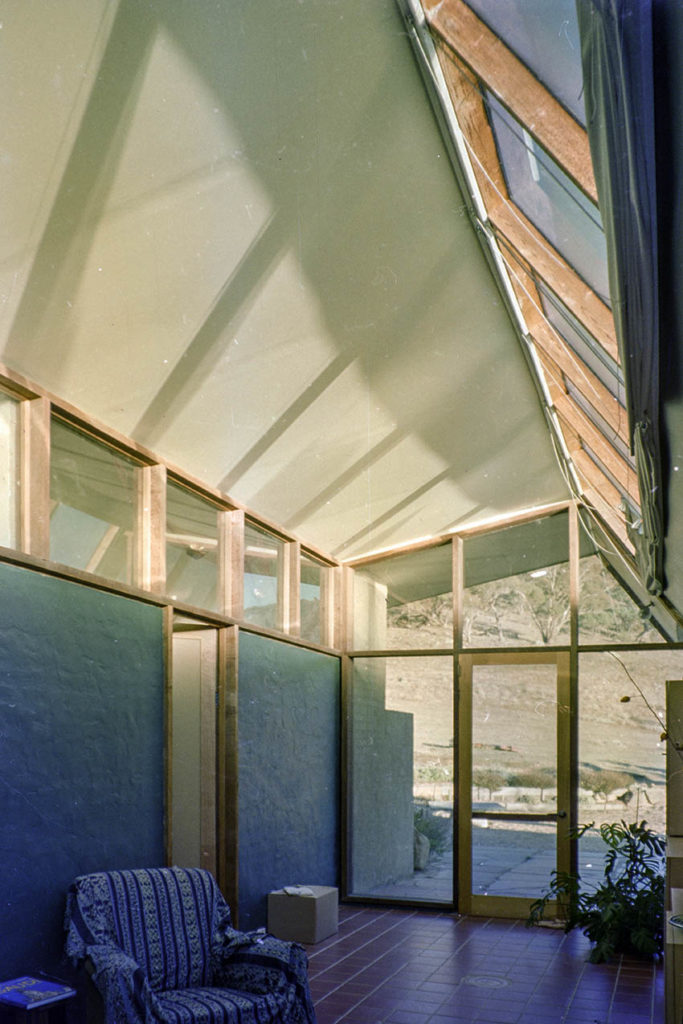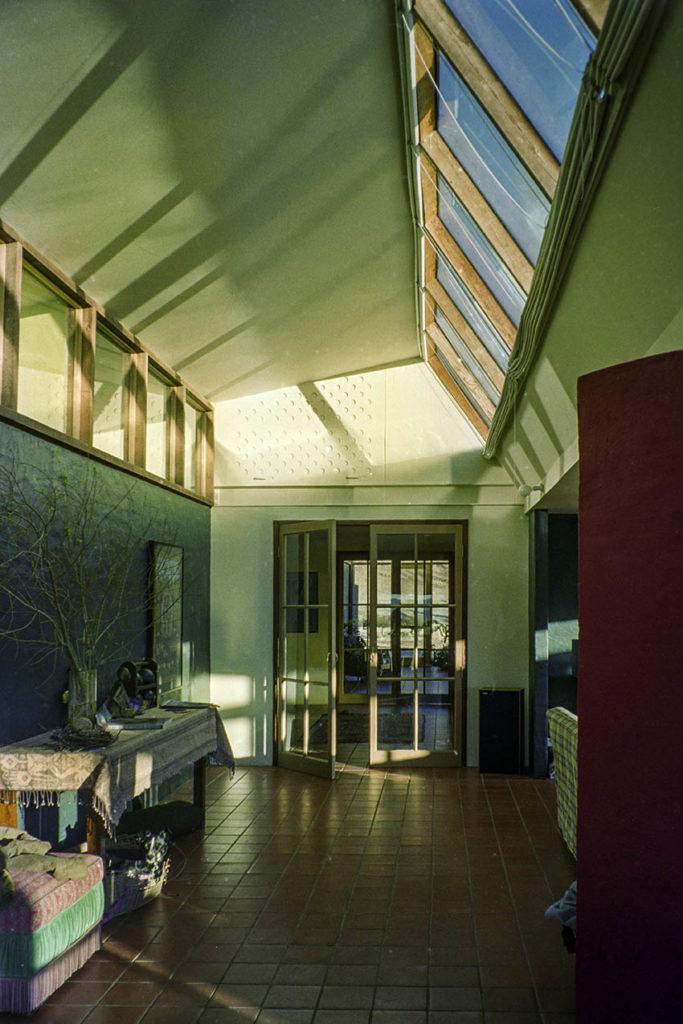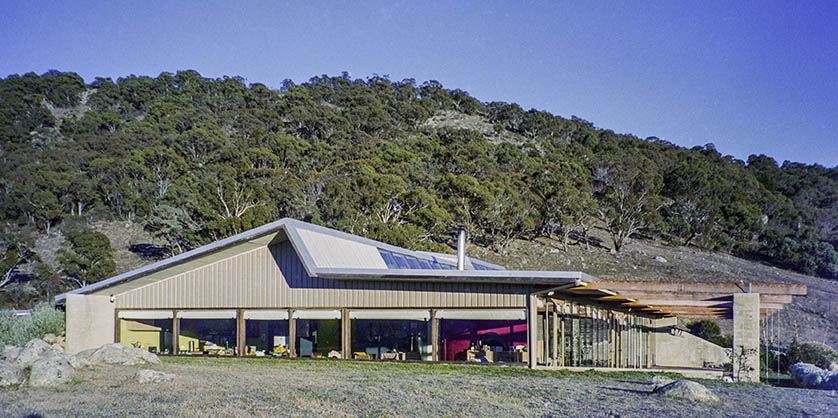View of house looking west, eastern windows facing a lovely view of the Burra Valley. Floor level is about 900mm below the natural ground level with its rocky outcrops. Large pergola facing north will eventually have a deciduous grape vine which will give good sun protection in summer. View below showas kitchen bench just above ground level – kangaroos often grazed there.

In 1983 I bought a 40acre block in the Burra Valley for Ben and Sarah and together we built a house for future sale to raise capital for their lifetime ventures.
Ben, Sarah and I spent 2 years building a semi-underground house using second hand roofing timbers made into webbed trusses with quite large spans. East, south and west walls were half buried under the spoil from the excavated floor, leaving the north wall fully exposed to the sun.
I had to give up near the end due to structural ill-health – early signs of arthritis.
This house helped to consolidate some of my solar theories in using natural sunlight for heating, heat storage concepts and the value of earth shielding against unwanted heat transfers.
It was sold by auction after a year or so occupying it and getting it working, but regrettably, I just didn’t have the time or the energy to do any monitoring of its thermal performance to produce statistics which support or negate the theory behind the design. It had lovely sunlight in every room.


The house design was based on having a large northern clerestory which could supply heat and sunlight to the whole house, heating the dark coloured internal mass storage wall and allowing sunlight to penetrate the southern rooms through a second clerestory window.
The above photos show how this has been achieved with the early morning sun (low heat density) at a low level. As the sun rises with greater heat density it impinges on the green wall below. Solar control is achieved by upward rising roman blinds on the outer clerestory window which are easily operated from below. The dark green wall absorbs a substantial amount of solar heat and re-radiates this heat during the evening to help keep the house warm in the cooler months.


